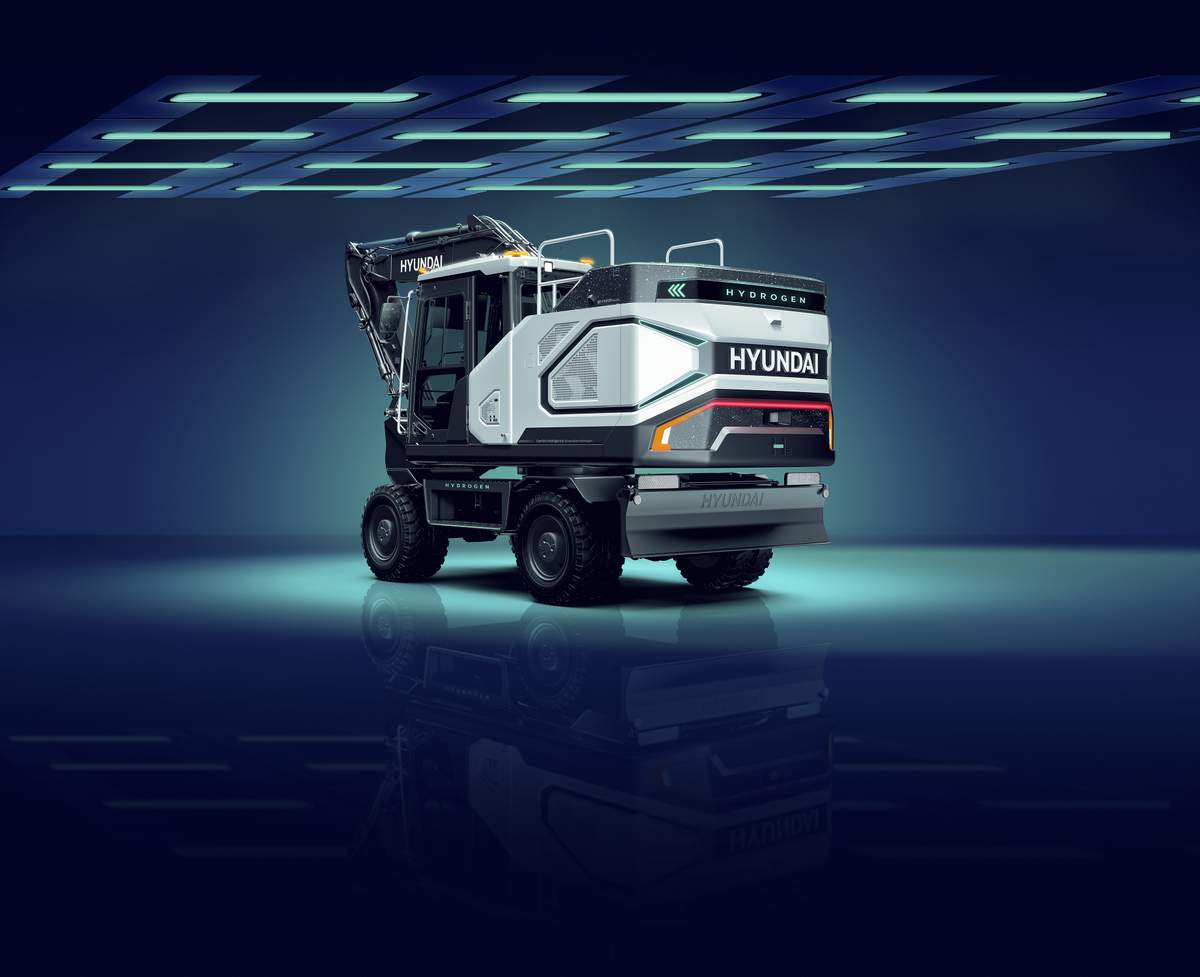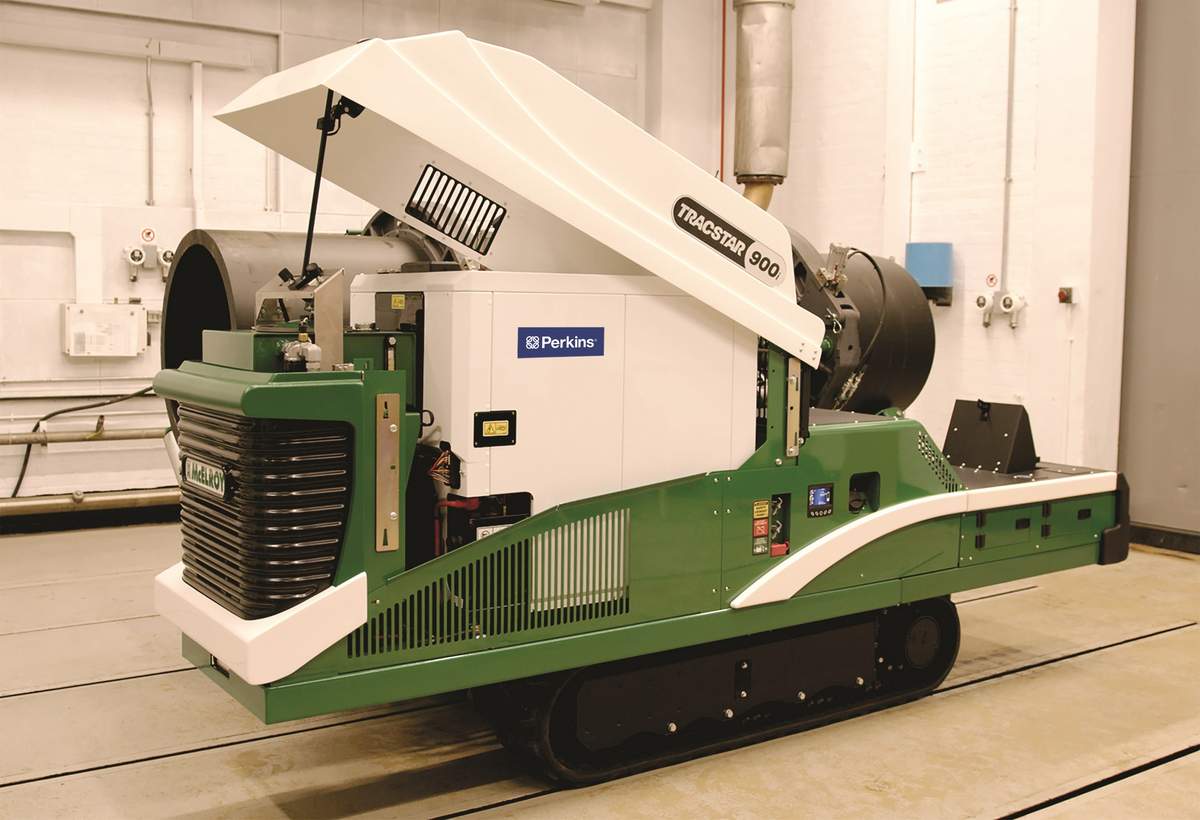Hydrogen Combustion vs. Fuel Cells: Where Small Construction Machines Fit into the H2 Movement
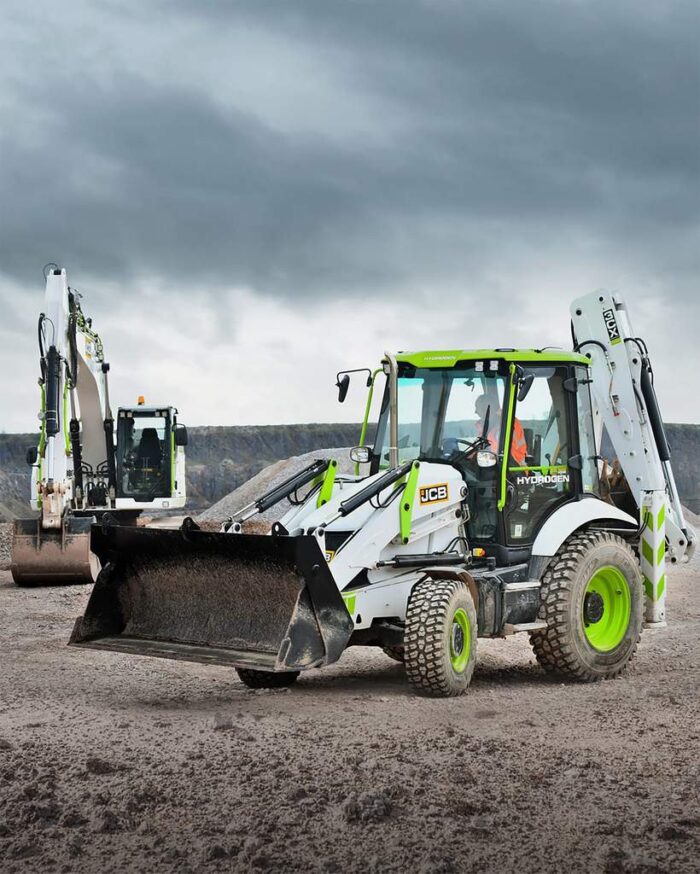
Will Hydrogen Ever Power Compact Equipment?
There are two primary ways of using hydrogen (H2) to power compact equipment. The first is as a replacement fuel for internal combustion engines — H2 ICE. This is touted as the more feasible of the two hydrogen designs and suggested as a direct replacement because it uses the same basic engine design as current ICEs.
Hydrogen Combustion
Or at least that’s true for gasoline engines, which are spark-ignited. But for compression-ignition (CI) diesel engines, the significantly higher autoignition temperature of hydrogen makes direct replacement very difficult if not impossible. Diesel autoignition is 210° C, 410° F, while hydrogen autoignition is variously listed as up to 535° C, 995° F. Hydrogen could be mixed with other fuels to lower its autoignition point. Dual-fuel engines are one option. Another is the use of fuel blends. Blended fuels such as biodiesel and E85 are commonplace, but finding the right blend for CI applications has not been accomplished. While there has been research in these areas, spark-ignited, hydrogen-fueled engines are emerging as the preferred solution. They also provide a familiar platform for service technicians aside from features specifically related to the use of hydrogen.
Emissions from hydrogen combustion are mostly water and nitrogen oxides (NOx). The equipment industry has extensive experience in limiting NOx tailpipe emissions using selective catalytic reduction (SCR) and diesel exhaust fluid (DEF). That same approach would work for hydrogen exhaust emissions, except that the aftertreatment system would have to be designed to withstand the effects of the much higher water content from hydrogen combustion. Hydrogen combustion does not produce carbon dioxide (CO2), but the SCR process does. Even so, the net CO2 output of hydrogen is 90 percent lower than that of diesel and likely would not require aftertreatment. This may change as emissions standards become more stringent.
Hydrogen Fuel Cells
The other way of using hydrogen to power compact equipment would be the use of hydrogen fuel cells. These use a chemical reaction between hydrogen and oxygen to produce electricity, which then powers the equipment as would a battery. Compared to the 25 to 30 percent efficiency of H2 ICE and 20 to 30 percent efficiency of diesel, the 50 to 60 percent efficiency of hydrogen fuel cells is a meaningful increase. Fuel cell technology is complex and expensive. Fuel-cell powered equipment would require entirely new designs. Even so, hydrogen fuel cells are seen by many as a long-term solution and H2 ICE as bridge technology until fuel cells get sorted out.
Let’s take a look at the smallest mini excavators on the market.
Hydrogen Is Plentiful Yet Scarce

Hydrogen is the most abundant material in existence and makes up some 75 percent of the universe by mass. But hydrogen on Earth is bound up in compounds such as water and biomass. Extracting hydrogen from compounds is energy-intensive. It is also expensive, costing twice as much as diesel fuel per million British thermal units (MMBtu). Hydrogen can be as high as $58/MMBtu and diesel as low as $21/MMBtu.
It must be noted that those costs are for green hydrogen, which is produced by electrolysis using renewable electricity. It is the cleanest way of producing hydrogen. Blue and gray hydrogen are less costly to produce but create their own emissions. While gray, blue and green are the most common color codes for hydrogen production methods, there are others including pink (using nuclear power for the process) and turquoise (using methane pyrolysis). Costs for green hydrogen continue to come down as the process sees further refinement and expansion.
Hydrogen Infrastructure Lacking
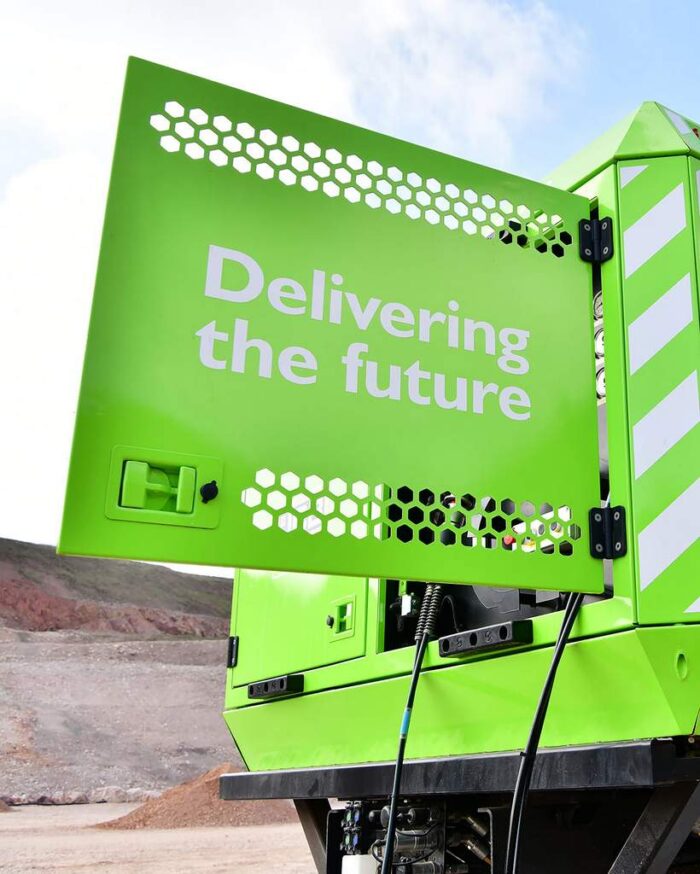
Production of hydrogen is only a first step; infrastructure must also be in place to distribute and store hydrogen and right now that infrastructure is sparse. As demand for hydrogen increases, the infrastructure will expand to meet that demand, but it isn’t as simple as building new tanks, pipes and pumps. Gasoline and diesel are incompressible fluids that retain a constant volume. Hydrogen is a gas and, like all gases, does not have a constant volume. Gases expand to fill the available space. A gallon of diesel fuel takes up the same amount of space whether it’s in a 5-gal can or the 100-gal tank on an excavator. But a 5-gal tank can hold as much hydrogen as a 100-gal tank depending on how much the hydrogen in each tank is compressed. And hydrogen must be compressed as equipment is refueled to get a useable quantity of fuel on board.
Hydrogen storage, whether in bulk or on equipment, requires extremely strong tanks. They must withstand the pressure required for refueling. They must have zero leaks. Hydrogen is highly combustible, as historic footage of the airship Hindenburg disaster clearly shows. The Hindenburg was filled with hydrogen to make it light and that hydrogen was ignited as the airship attempted to dock in Lakehurst, New Jersey, on May 6, 1937.
OEM Perspectives
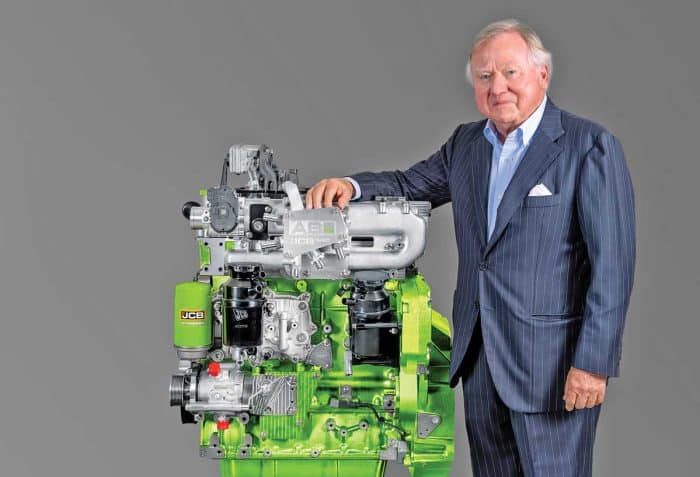
Equipment manufacturers balance several objectives in developing hydrogen-powered equipment. The performance characteristics, operator experience and serviceability should be comparable to that of diesel-powered equipment as a minimum. Improving these traits would be good. They see hydrogen as one path to zero emissions but not the only path. Battery-electric also has a place. Whether BEV or H2 is best depends on the use profile of the machine. Battery is good for compact equipment seeing intermittent use during a single-shift workday and transported often between jobsites. Hydrogen would be better for larger machines used in a production environment at a single location. Some machines, such as skid steers and compact wheel loaders, fall into a gray area where they may be moved around frequently, which favors BEV, but also have high energy demands, which favors hydrogen. Here are insights from two manufacturers well qualified in these matters.
JCB’s View on Hydrogen Propulsion

“After more than 18 months of intensive development, JCB introduced the world’s first working hydrogen-powered backhoe,” says Sam Wagstaff, general manager, JCB North America. That backhoe and a hydrogen-powered telehandler were introduced at COP26 in Glasgow in 2021. “We know that no single fuel will solve every jobsite challenge. That’s why we’re committed to a dual-path strategy that embraces both hydrogen and battery-electric technologies.”
He says compact machines are better matches for electric power. That could include hydrogen fuel cells, but JCB’s present hydrogen focus is on internal combustion. “But as electric machine design advances, it’s becoming clear that not every compact machine is a good fit for battery power alone. Some equipment straddles the line between compact and midsize, requiring longer run times, higher-duty cycles and more robust power output than battery systems can reliably provide.”
Wagstaff notes that while compact equipment is not the entry point for hydrogen into equipment, the rapid refueling, excellent power output and familiar operator experience of H2 ICE have appeal across the board. “As production scales and fueling options expand, these users will benefit as clean energy solutions scale across the industry.”
Manitou Group’s View on Hydrogen Propulsion

Manitou Group’s hydrogen development program began in 2021. The first test drive of a fuel cell prototype fixed telehandler came in December 2022. Its MRT 2260 telehandler was shown at bauma 2025. It is a battery-electric machine where battery capacity is augmented by a hydrogen fuel cell, replacing the diesel range extender used in hybrid MRTs. The MRT 2260 has a lift height of 22 meters/72 ft and a load capacity of 6 metric tons/13,227 lbs.
“Our sustainability strategy is not depending on one or another energy,” says Franck Lethorey, external communications manager, Manitou Group. “We intend to reduce our gas emissions by giving a performance solution to every customer, with no compromise on the performance and safety compared to diesel models.” Electrification is part of that strategy and hydrogen fuel cells are part of electrification. Lethorey says that when compared to diesel power, H2 ICE has lower power, still has emissions considerations and the noise associated with internal combustion. “Typically, the fuel cell technology is a natural continuity of the electrification of our range.”
Richard Ries is a freelance writer for Compact Equipment.
Hyundai’s HW155H Fuel Cell Excavator Showcases Hydrogen’s Clean Power Potential
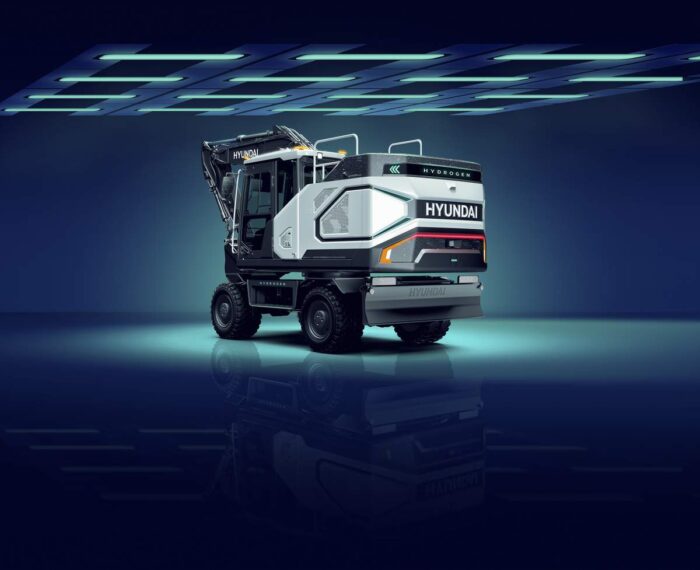
Hyundai Construction Equipment’s HW155H is more than just a concept — it’s a working prototype of what hydrogen fuel cell tech can do on a real jobsite. Making its active debut at bauma 2025, the wheeled excavator ran all week on clean hydrogen, emitting nothing but water vapor. Developed in partnership with Hyundai Motor Co., the HW155H features a 90-kW fuel cell powering an electric motor and hydraulic system. Hyundai’s solid-state, low-pressure hydrogen storage system replaces the counterweight, allowing 12 hours of runtime and safer operation. A mobile hydrogen refueler also made its debut, capable of charging multiple machines. Together, they represent a real-world vision for sustainable, carbon-free construction.

